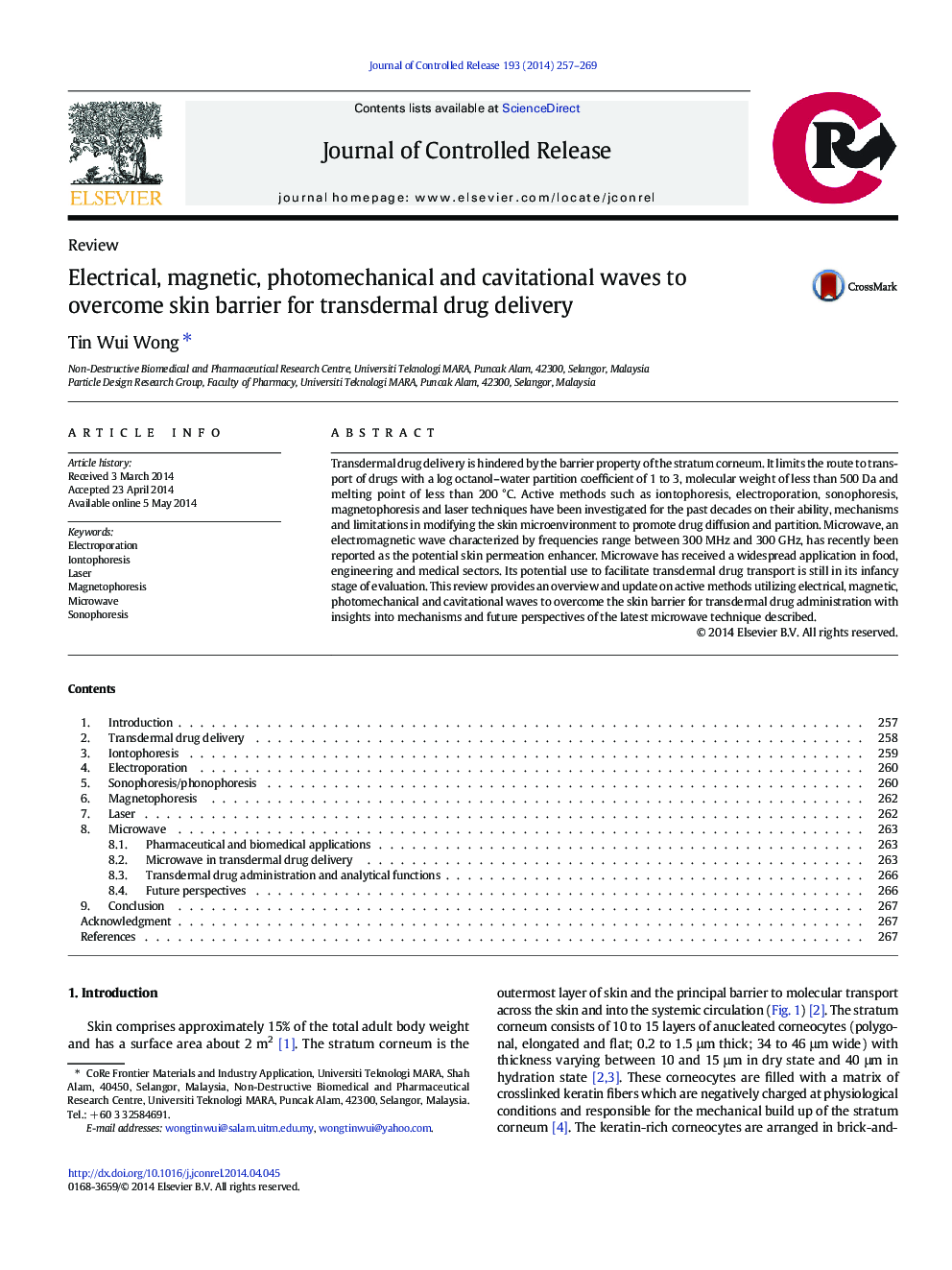| Article ID | Journal | Published Year | Pages | File Type |
|---|---|---|---|---|
| 1423898 | Journal of Controlled Release | 2014 | 13 Pages |
Transdermal drug delivery is hindered by the barrier property of the stratum corneum. It limits the route to transport of drugs with a log octanol–water partition coefficient of 1 to 3, molecular weight of less than 500 Da and melting point of less than 200 °C. Active methods such as iontophoresis, electroporation, sonophoresis, magnetophoresis and laser techniques have been investigated for the past decades on their ability, mechanisms and limitations in modifying the skin microenvironment to promote drug diffusion and partition. Microwave, an electromagnetic wave characterized by frequencies range between 300 MHz and 300 GHz, has recently been reported as the potential skin permeation enhancer. Microwave has received a widespread application in food, engineering and medical sectors. Its potential use to facilitate transdermal drug transport is still in its infancy stage of evaluation. This review provides an overview and update on active methods utilizing electrical, magnetic, photomechanical and cavitational waves to overcome the skin barrier for transdermal drug administration with insights into mechanisms and future perspectives of the latest microwave technique described.
Graphical abstractFigure optionsDownload full-size imageDownload high-quality image (148 K)Download as PowerPoint slide
